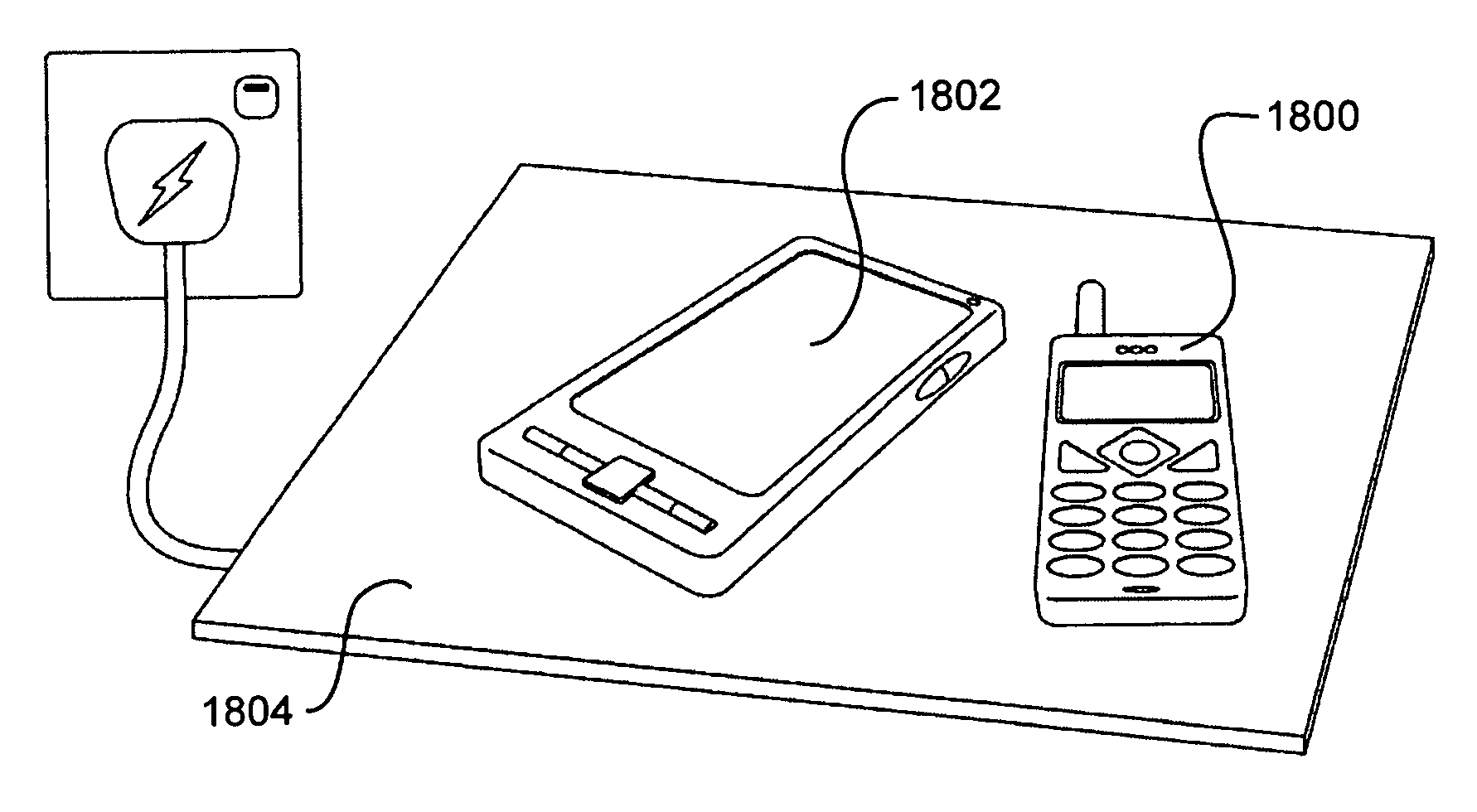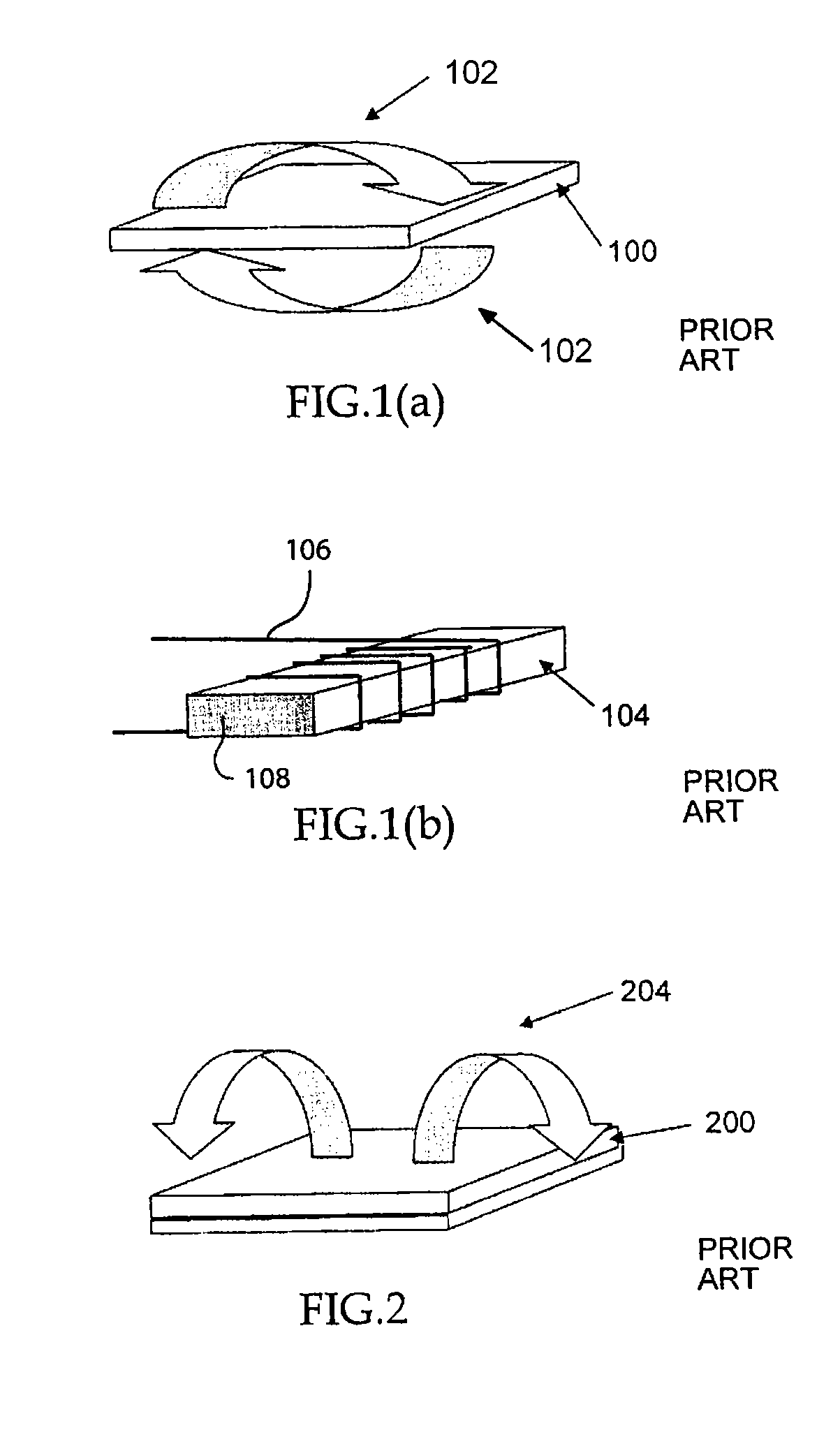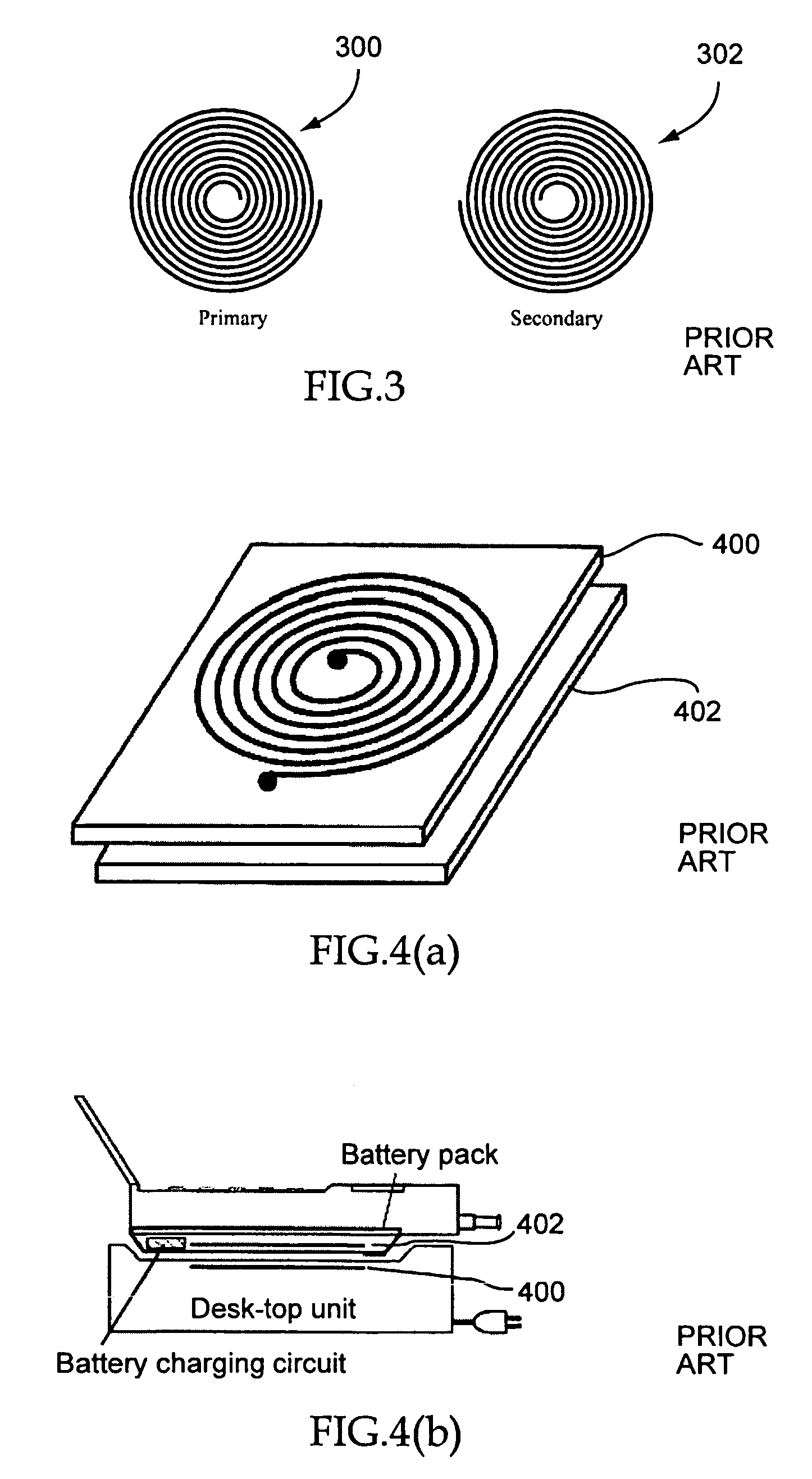Rechargeable battery circuit and structure for compatibility with a planar inductive charging platform
a rechargeable battery and charging platform technology, applied in the direction of inductance, secondary cell servicing/maintenance, transportation and packaging, etc., can solve the problems of incorrect energy transfer and even heating effect in the metallic desk, simple inability to house electronic equipment, and serious hampered energy transfer
- Summary
- Abstract
- Description
- Claims
- Application Information
AI Technical Summary
Benefits of technology
Problems solved by technology
Method used
Image
Examples
Embodiment Construction
[0048]Traditional power adaptors (or battery chargers) for portable electronic equipment such as mobile phones and electronic organisers are essentially AC-DC power converters that change an AC mains voltage (typically 110V-240V) to a DC voltage (typically 3V to 12V). Most battery chargers for mobile phones provide a DC voltage of 4-6V. The functional block diagram 600 of a power adapter is shown in FIG. 6. When the power adaptor is plugged into the electronic equipment (to be charged), the two outputs DC+ 602 and DC−604 are connected to the mechanical contacts of the charger socket of the electronic equipment.
[0049]FIG. 7 depicts a battery pack 700 with several external mechanical contacts (e.g., contact 702) that are accessible. Inside the battery pack are the electric “cells”704 and a “charging protection circuit”706 as shown in FIG. 8. Two mechanical contacts 702 and 708 are connected to the positive and negative terminals of the battery through the charging protection circuit. ...
PUM
 Login to View More
Login to View More Abstract
Description
Claims
Application Information
 Login to View More
Login to View More - R&D
- Intellectual Property
- Life Sciences
- Materials
- Tech Scout
- Unparalleled Data Quality
- Higher Quality Content
- 60% Fewer Hallucinations
Browse by: Latest US Patents, China's latest patents, Technical Efficacy Thesaurus, Application Domain, Technology Topic, Popular Technical Reports.
© 2025 PatSnap. All rights reserved.Legal|Privacy policy|Modern Slavery Act Transparency Statement|Sitemap|About US| Contact US: help@patsnap.com



